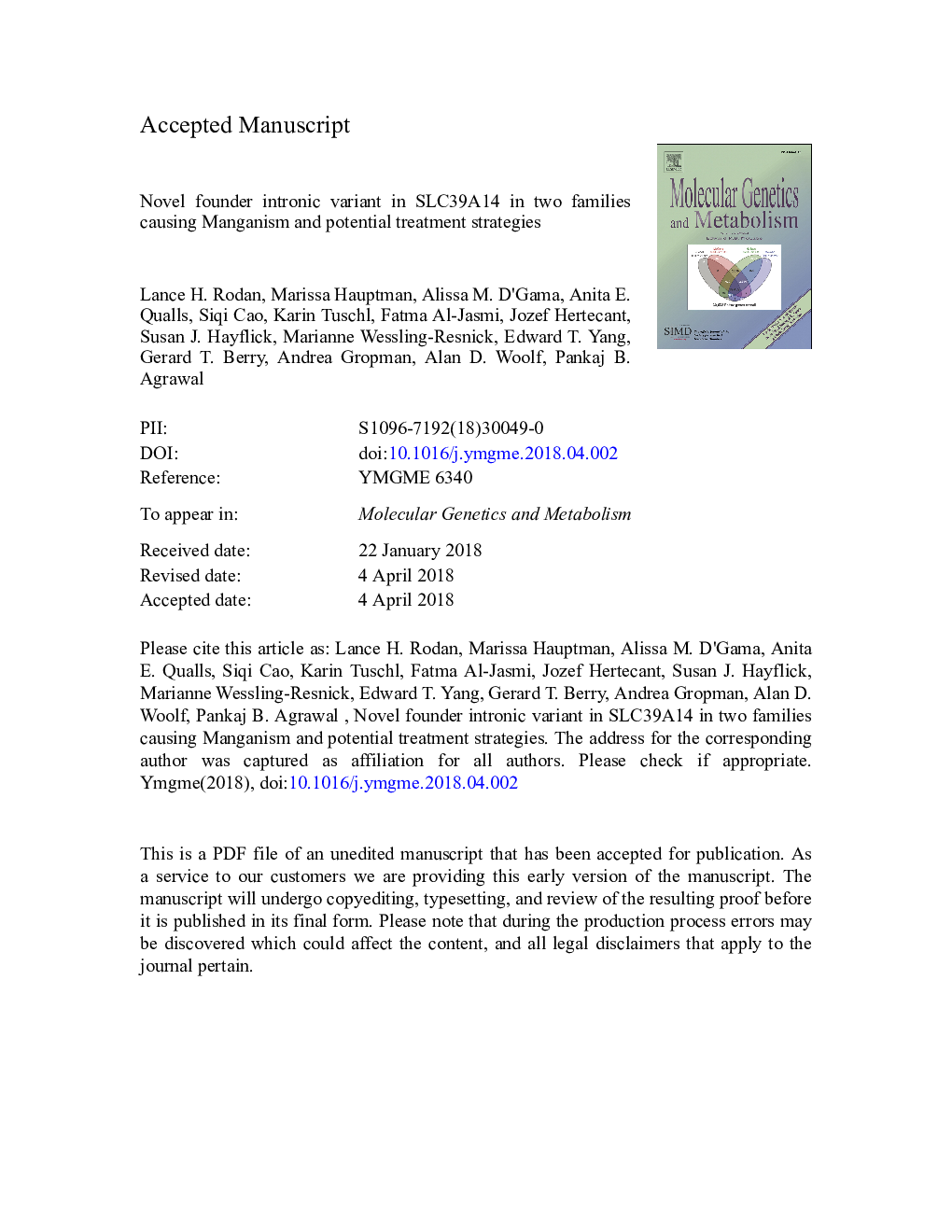| Article ID | Journal | Published Year | Pages | File Type |
|---|---|---|---|---|
| 8342967 | Molecular Genetics and Metabolism | 2018 | 28 Pages |
Abstract
Congenital disorders of manganese metabolism are rare occurrences in children, and medical management of these disorders is complex and challenging. Homozygous exonic mutations in the manganese transporter SLC39A14 have recently been associated with a pediatric-onset neurodegenerative disorder characterized by brain manganese accumulation and clinical signs of manganese neurotoxicity, including parkinsonism-dystonia. We performed whole exome sequencing on DNA samples from two unrelated female children from the United Arab Emirates with progressive movement disorder and brain mineralization, identified a novel homozygous intronic mutation in SLC39A14 in both children, and demonstrated that the mutation leads to aberrant splicing. Both children had consistently elevated serum manganese levels and were diagnosed with SLC39A14-associated manganism. Over a four-year period, we utilized a multidisciplinary management approach for Patient 1 combining decreased manganese dietary intake and chelation with symptomatic management of dystonia. Our treatment strategy appeared to slow disease progression, but did not lead to a cure or reversal of already established deficits. Clinicians should consider testing for noncoding mutations in the diagnosis of congenital disorders of manganese metabolism and utilizing multidisciplinary approaches in the management of these disorders.
Keywords
SLC39A14DcTNBIADMSAWESOHSUCBCPKANqRT-PCRCaNa2EDTADDCTBy mouthcDNAComplementary DNAdimercaptosuccinic acidUAEUnited Arab EmiratesMRIneurodegeneration with brain iron accumulationMagnetic resonance imagingWhole exome sequencingtwice dailyManganese toxicitycomplete blood countManganesePASpolymerase chain reactionreal-time quantitative reverse transcription polymerase chain reactionPCRPantothenate Kinase-Associated NeurodegenerationBID
Related Topics
Life Sciences
Biochemistry, Genetics and Molecular Biology
Biochemistry
Authors
Lance H. Rodan, Marissa Hauptman, Alissa M. D'Gama, Anita E. Qualls, Siqi Cao, Karin Tuschl, Fatma Al-Jasmi, Jozef Hertecant, Susan J. Hayflick, Marianne Wessling-Resnick, Edward T. Yang, Gerard T. Berry, Andrea Gropman, Alan D. Woolf, Pankaj B. Agrawal,
